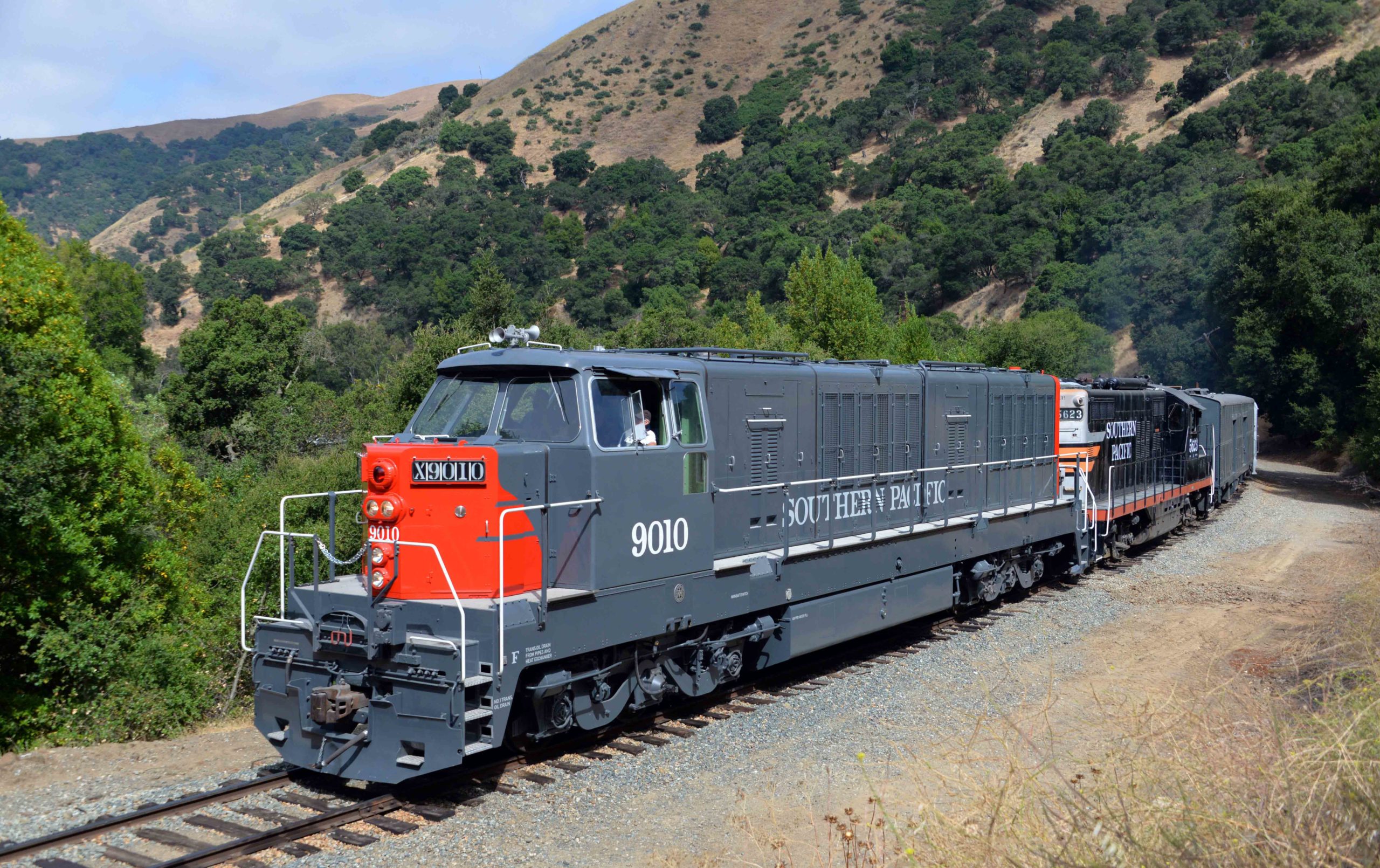What began as a cosmetic restoration blossomed into an operational return when transmission(s) and geared truck(s) were located overseas and mated to the No. 2 (rear) engine, which was discovered to be serviceable after about 50 years of inactivity. The No. 1 engine suffered serious decay and is not planned to be made operable.
After a dedication event, No, 9010 piloted a short train for two excursions over the PLA’s Niles Canyon Railway for those who could appreciate the history of the KM ‘Hydro.’ Although functional, due to No. 2 engine oil consumption issues, the decision was made to have No. 9010 pushed or pulled by an accompanying GP9, resplendent in weathered-Black Widow paint, though all MU functions on 9010 were operable allowing it to be the controlling locomotive.
Plans are in the works to address the oil consumption issues and make other repairs to allow the engine to power trains on its own again.















The Trains article made me curious as to how the diesel HP was transmitted to the trucks. Poking around on the web showed me that each diesel was connected to a truck via a jackshaft to a gearbox, them the gearbox had an output shaft 180 degrees back down via a jackshaft to the truck. Where does the “hydraulic” enter into the drive system? Obviously the mechanical connections were not directly driven off the output shaft of the engine.
There are some good “tube” videos out there of first engine startup, first testing, GP in black widow paint.
Great that some of these odd balls of the past are being saved from the scrap yard!
More rarer then the much overrated 4014.
One may forward the heretical notation that the KM job was more than 4014’s.
Gregory Whitten,
In order to get the #1 engine up and running again…it would be necessary to replace it entirely with either a rebuilt one or new one…now if only the nice people at K-M(whom provided some of the replacements parts gratis) would be nice enough to decide to make the unit fully operational at their expense(don’t laugh, some companies do know what publicity is, even if it costs a few thousand dollars).
Debuts are scary business aren’t they. A lot of pressure riding on the trains to do well and make sure that they’re worth all the money the owners have put into it. Let’s just hope that they’ll be able to rectify all those issues so there won’t be anybody making noise about it in time to come..
Outstanding.Hopefully the #2 oil comsumption issue can be resolved and eventually #1 can also be returned to operational as well.that would be great.
A1 job!
Congratulations!!!
Congratulations to everyone involved in this restoration. It’s been a pleasure following it online the past few years.
Seeing it up close and riding the excursion I can attest to what a beautiful restoration job was done.
Kudos to the Niles Canyon Railway staff for knowledgeable information and anecdotes around these unique units. And how after discovering that they were unsuited for their “on paper” mountain climbing low speed tractive effort benefits due to much heavier US freight trains (compared to Europe from whence they came), they lived out the remainder of their service life around the Bay Area and the Central Valley, all in the recollection of the NCRY staffers who by and large lived here during their reign.
That’s impressive; great job!
A rare historical unit, great to see the progress made!